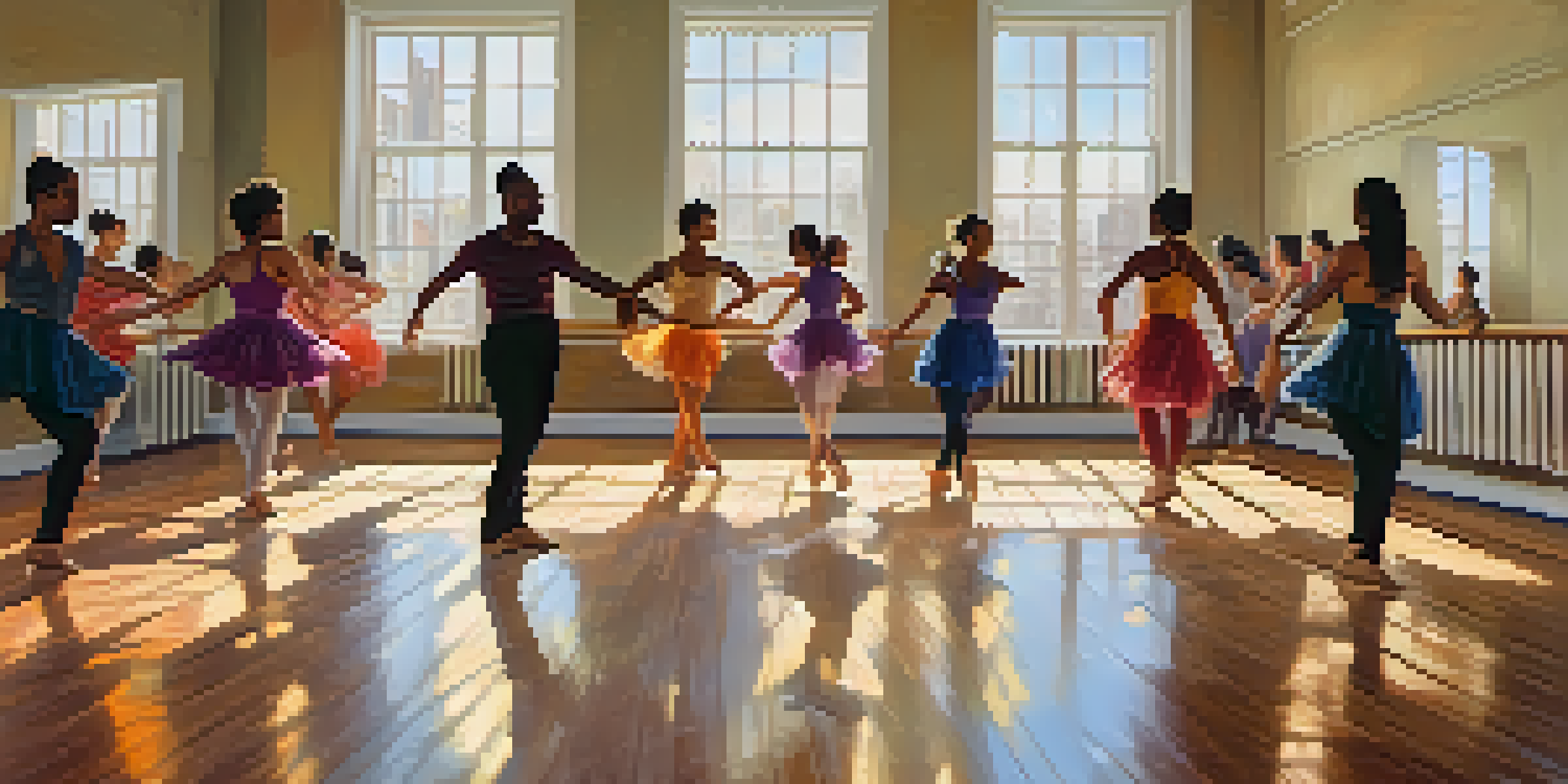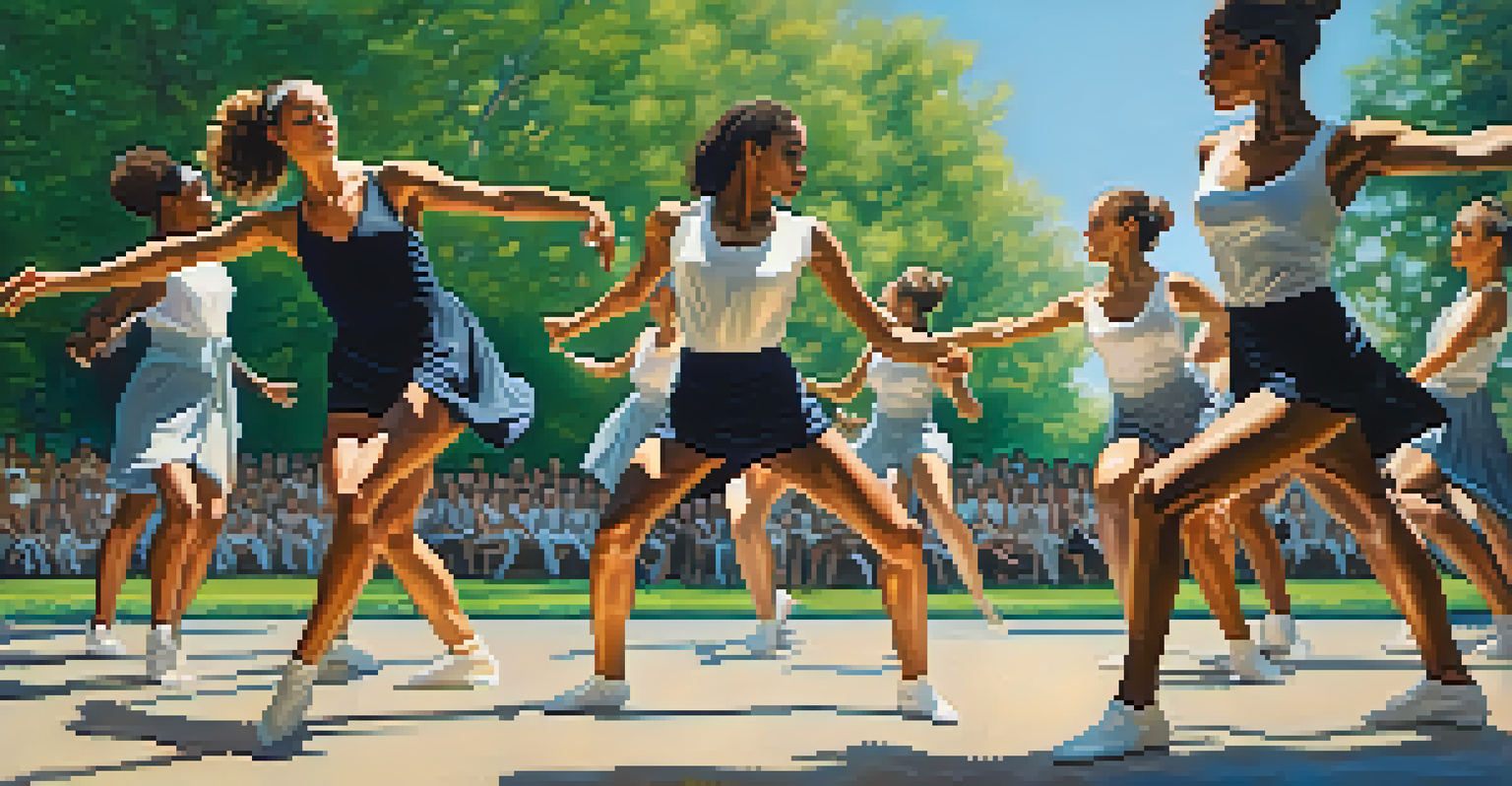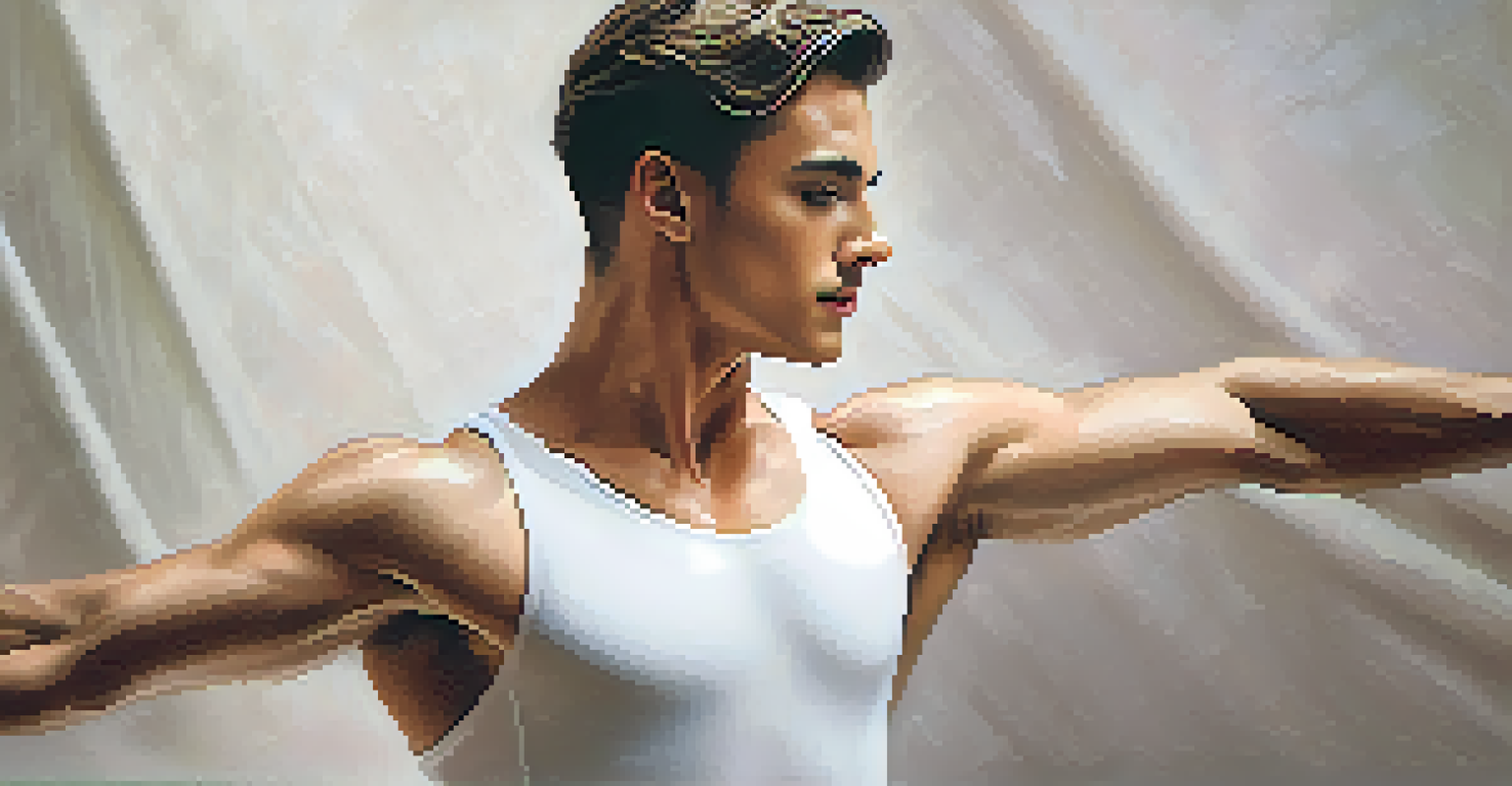The Influence of Dance on Traditional Gender Roles in Society

The Historical Context of Dance and Gender Roles
For centuries, dance has been intertwined with cultural expressions and societal norms. Traditionally, certain dance forms were assigned to specific genders, often reinforcing stereotypes. For instance, ballet has long been perceived as a feminine art, while breakdancing was once considered a male-dominated space. Understanding this historical context helps us see how gender roles have evolved through the art of dance.
Dance is the hidden language of the soul.
In many cultures, dance served as a medium for storytelling and social bonding, but it also reflected the rigid gender roles of the time. Men were often depicted as strong and assertive, while women were portrayed as graceful and nurturing. This dichotomy was not just about movement; it was about societal expectations. As we explore these themes, it becomes evident that dance has been both a mirror and a mold for gender identities.
As societies progressed, the lines between these roles began to blur. Dance became a platform for challenging traditional norms and embracing fluidity in gender expression. Today, we see a diverse range of dance styles that allow for a spectrum of identities, showcasing how the dance world has started to break free from its historical constraints.
Dance as a Medium for Challenging Stereotypes
Dance has always been a powerful tool for self-expression, and it provides a unique opportunity to challenge societal norms. When dancers step onto the stage, they often do so with the intention of breaking free from stereotypes. For example, choreographers like Pina Bausch and Alvin Ailey used their work to confront preconceived notions of gender and race, pushing audiences to rethink traditional narratives.

Through innovative choreography, dancers can embody various traits regardless of their gender, encouraging viewers to reassess their beliefs about masculinity and femininity. Consider hip-hop dance, which celebrates both strength and fluidity, allowing participants to explore identities beyond binary definitions. The movement itself becomes a statement, showcasing that dance can be an act of rebellion against rigid gender roles.
Dance Challenges Gender Stereotypes
Dance serves as a powerful medium for self-expression, allowing individuals to challenge and redefine traditional gender roles.
Moreover, contemporary dance often blurs the lines between gendered movements. Male dancers are no longer confined to strength-based moves, while female dancers can express power and aggression. This shift invites a broader understanding of identity, emphasizing that everyone has the right to embody their true selves through dance, regardless of societal expectations.
The Role of Dance in Empowering Women
Throughout history, dance has played a pivotal role in empowering women, offering them a space to reclaim their narratives. From the suffragette dances of the early 20th century to modern-day flash mobs advocating for women's rights, dance has been a crucial form of protest and celebration. This empowerment through movement allows women to express their strength and resilience in a society that often seeks to limit their voices.
The dance is a poem of which each movement is a word.
Dance creates a sense of community among women, where they can share experiences and support one another. Classes, workshops, and performances foster an environment of collaboration, helping women to build confidence and leadership skills. This collective experience not only enhances individual empowerment but also challenges the collective stereotypes that society imposes on women.
Moreover, the visibility of women in dance has grown significantly, with female choreographers and dancers leading the way. Initiatives like the #MeToo movement within dance highlight the importance of creating safe spaces for women, allowing them to thrive creatively. By taking center stage, women in dance are not just performing; they are actively reshaping the narrative of gender in society.
Men in Dance: Breaking Traditional Masculinity
While dance has historically been associated with femininity, men in dance are increasingly challenging traditional notions of masculinity. Male dancers now embrace a wide range of styles, from contemporary to ballet, and their presence is reshaping societal attitudes toward what it means to be masculine. For instance, dancers like Misty Copeland and David Hallberg are redefining roles, showing that strength can also be delicate.
This shift encourages men to express vulnerability and emotion through movement, which has often been deemed unacceptable in traditional male roles. Dance offers a unique platform for men to explore their identities, allowing them to break free from the constraints of toxic masculinity. As they take risks on stage, they inspire others to do the same, creating a more inclusive and diverse dance community.
Empowerment Through Dance for Women
Throughout history, dance has empowered women by providing a platform to reclaim their narratives and foster community support.
Additionally, the increasing visibility of male dancers in various genres promotes acceptance and understanding. By showcasing their talents in non-traditional spaces, they challenge the stereotype that dance is solely a feminine pursuit. This evolution not only benefits men but also enriches the art form as a whole, paving the way for future generations to enjoy dance without the burden of outdated gender roles.
Cultural Influences of Dance on Gender Perceptions
Dance is a reflection of cultural values and beliefs, and as such, it plays a significant role in shaping gender perceptions. Various dance forms around the world reveal how different societies view gender roles. For example, traditional Indian dance often celebrates femininity through intricate movements, while African dance emphasizes communal strength and unity, showcasing diverse interpretations of gender.
Moreover, globalization has allowed for the fusion of dance styles, creating new narratives around gender. When different cultures intersect, they bring fresh perspectives that challenge existing norms. For instance, the rise of K-pop has introduced gender-fluid expressions, where male and female performers share the stage, highlighting the beauty of collaboration over competition.
As these influences permeate local dance scenes, they spark conversations about gender identity and expression. Communities begin to embrace diversity, allowing for a richer understanding of what it means to be male or female in the context of dance. This cultural exchange not only broadens our perspective but also encourages individuals to engage with dance on a more personal level.
The Impact of Social Media on Dance and Gender Roles
In recent years, social media has transformed the dance landscape, providing a platform for dancers to showcase their skills and challenge gender roles more broadly. Platforms like TikTok and Instagram have democratized dance, allowing anyone to participate, regardless of gender. As a result, we see a surge of diverse voices and styles, breaking away from traditional expectations.
Social media also fosters a sense of community, where dancers can connect with like-minded individuals across the globe. This online interaction encourages collaboration and supports the idea that dance transcends gender boundaries. Viral challenges often emphasize creativity over conformity, inviting everyone to express themselves uniquely, regardless of their gender identity.
Men Redefining Masculinity in Dance
Male dancers are increasingly embracing a variety of styles, challenging conventional masculinity and promoting a more inclusive dance culture.
Moreover, the visibility of dancers from different backgrounds on social media has led to greater awareness of gender-related issues. Dancers use their platforms to advocate for equality and inclusivity, influencing how audiences perceive gender roles in dance. This shift creates a ripple effect, encouraging both performers and audiences to reconsider their own beliefs and biases, ultimately leading to a more inclusive dance culture.
The Future of Dance and Gender Dynamics
As we look to the future, it's clear that dance will continue to play a pivotal role in shaping gender dynamics in society. With the ongoing conversations around gender fluidity and inclusivity, the dance community is poised to embrace change. We can expect to see even greater diversity in performances, where traditional roles are constantly challenged and redefined.
Educational institutions are also recognizing the importance of diverse perspectives in dance training. By incorporating a variety of styles and philosophies, they prepare the next generation of dancers to be more open-minded and inclusive. This shift not only enriches their artistry but also promotes a culture of acceptance and understanding within the dance community.

Ultimately, the evolution of dance reflects broader societal changes. As we continue to challenge and redefine gender roles, dance will remain a powerful form of expression and resistance. By celebrating diversity on stage and beyond, we pave the way for a future that honors individuality and inclusivity in all forms.